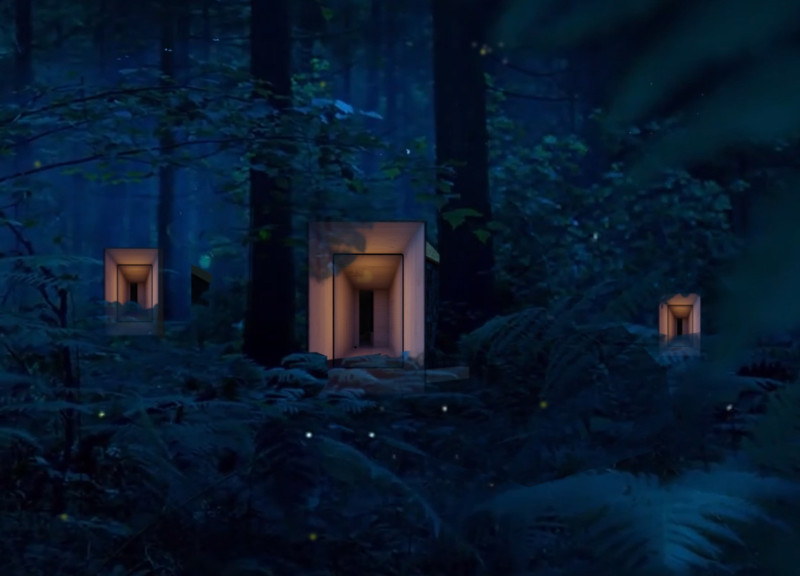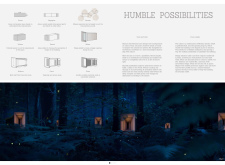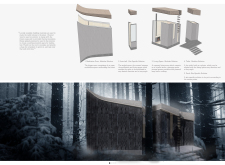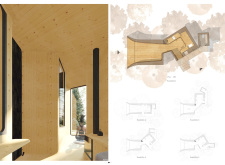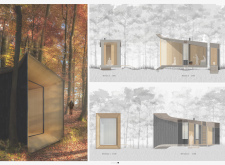5 key facts about this project
Humble Possibilities is a design that emphasizes the integration of a cabin within a wooded landscape. The setting serves both as a retreat and a space that nurtures a connection with nature. The overall concept revolves around allowing the cabin to interact with its environment, gradually letting nature reclaim the structure over time. This reflects a thoughtful approach to sustainable living.
Modularity and Flexibility
The cabin employs a modular design that adjusts according to the site’s unique features. This flexibility enhances the building’s utility while allowing it to adapt to changes in the landscape. The layout consists of various zones, including areas for meditation and communal living. Each section promotes a sense of calm and purpose, ensuring that the spaces work well together.
Cultural and Environmental Influence
Inspired by traditional Latvian architecture, the design incorporates pitched roofs and thick walls. These elements are practical, helping to keep the interior comfortable in various weather conditions. They also connect the cabin to local cultural practices. This architectural choice reflects a desire to establish a bond with the natural world, showcasing how human dwellings can be in harmony with their surroundings.
Materiality and Aesthetics
Materials play a key role in shaping the cabin’s identity. The exterior features charred wood, which helps the structure blend into the forest. This choice not only improves durability but also enhances the visual connection to the environment. Inside, honey-glazed pinewood creates warmth and encourages a peaceful atmosphere. The thatched roof serves dual purposes—it provides insulation and promotes the growth of local plants and wildlife.
Spatial Arrangement and Detail
Inside the cabin, the design focuses on creating serene spaces that support meditation and reflection. The interiors are crafted to feel welcoming, using smooth edges and clean lines that do not distract. The sloped roof aids in water drainage and keeps the cabin low-profile, allowing it to recede into the landscape. This attention to detail makes the structure a subtle, yet significant part of the forest.


